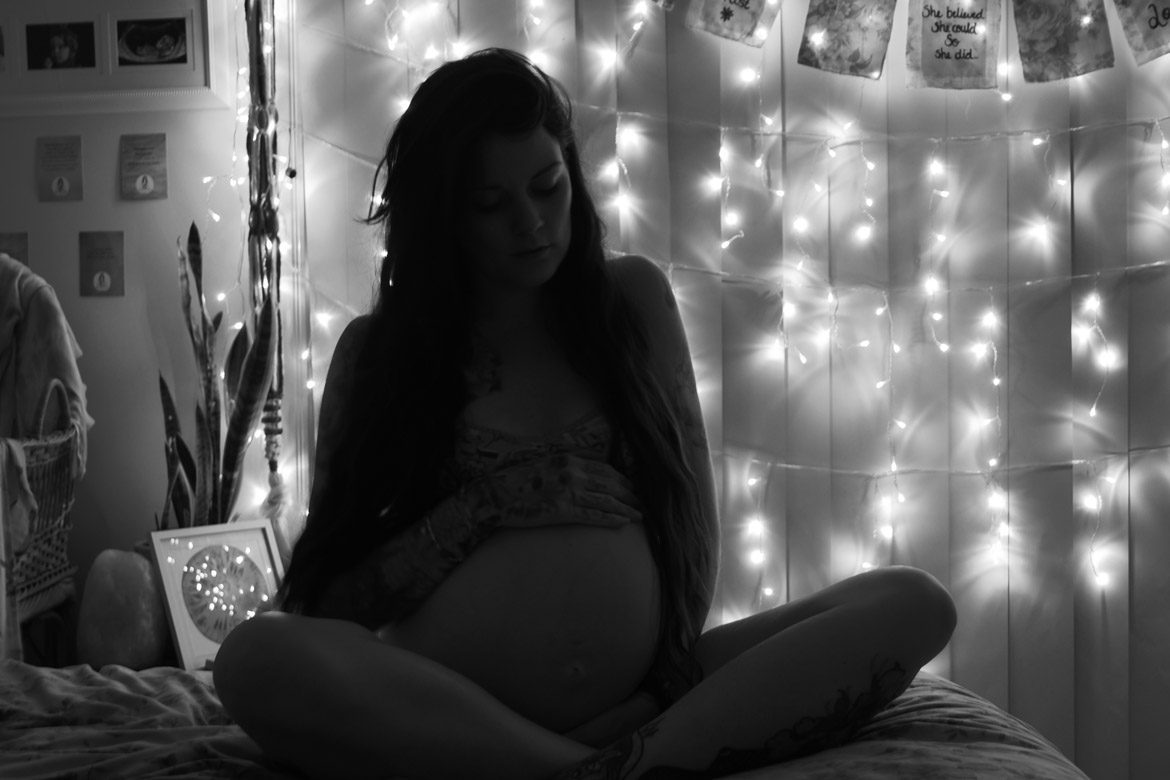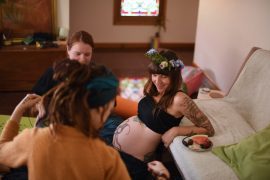By Susan Bradley
Those two little words “home” and “birth” when put together can cause even mild mannered folk to suddenly become highly opinionated and start to either evangelize about it, or to shriek with fear that your baby’s life may be in danger.
I think we need to all calm down, and separate fact from fiction.
To take look at what a home birth actually is, why it’s not reckless and all about “luck”, and that with a straightforward pregnancy it should be something you consider in your planning for birth and not simply dismiss out of hand.
Because I imagine that you want to make all your decisions about your pregnancy, baby and child from a place of knowledge and information, not myths and hearsay. I’m absolutely not saying that home birth is right for everyone or it’s the best place to give birth for you (only YOU can make that choice), it’s just important that you do make it as a conscious choice – as we know that making positive choices in pregnancy and birth hugely increases our sense of having a positive birth experience – something we all want.
(If you have what’s called a “high risk” pregnancy, then you may still choose to have a home birth, but you will have different issues *potentially* to consider to that my discussion below. But things such as VBAC, multiple births and gestational diabetes do NOT automatically exclude you from a home birth).
Home Birth Myths Busted
So first of all let’s look at some things that many of the couples who come along to my Hypnobirthing & Birth preparation courses often assume about home birth, before we’ve looked at it objectively and researched it. The most common misconceptions about a home birth I hear are: “It’s unsafe”, “It’s messy”, “It’s for hippies!” and “It’s only for second (or more) time mums” – ALL of which are untrue!
Myth 1 – Home Birth Is Unsafe
Home birth is safe because you have midwives with you at home, just as you would in the hospital. Midwives do the same monitoring as they would in a hospital and in fact they are with you solely the entire time (in a hospital they may be with more than one woman depending how busy it is). If the midwife has any concerns they act on them straight away, making home birth very safe. Your midwife will be very aware and ensure that if required you can transfer in to hospital at any point. Or indeed if you just change your mind and want to go in!
What if something goes wrong at home?
If something does go wrong at home it’s acted on quickly by your midwife, who has your undivided attention. Midwives are trained in emergency procedures, and have emergency drugs with them. Also to remember that things very rarely go wrong in the blink of an eye, and your midwife will get signs that something may be wrong. Your home birth midwife will be very experienced, and will stay nice and calm and call the hospital, to let them know you are on your way – so everything is ready for you when you arrive. Their job is to make sure mum and baby are kept really safe.
For large numbers of women, everything that people would associate with a positive experience of birth – homely, calm, midwife-led, low-tech environments – is also optimal for safety. The very act of being in hospital can, in some instances, cause difficulties to the labouring woman that would not necessarily have happened had she chosen to stay at home. This is known as iatrogenic harm, and may well explain why incidences of interventions such as episiotomy and instrumental delivery are so much higher for women who give birth in obstetric units, as outlined in the Nice guidelines. For first time mums, 16.5 per cent (165 per 1,000) have an episiotomy at home, while 24.2 per cent do in obstetric units. For low-risk second time (or beyond) mums, these stats are 1.5 per cent versus 5.6 per cent. They are also five times more likely to have a cesarean in hospital versus home; over four times more likely to have an instrumental delivery and twice as likely to have a blood transfusion.
While women who experience such interventions may believe that their bodies let them down and the intervention saved them, they will never know if those same problems would have occurred at all, had they stayed at home or in a midwife-led unit.
And it seems that most midwives would choose to birth at home themselves, as they know it’s more conducive to a physiological labour and birth.
But birth is not “pot luck”. Women’s bodies work better in some environments, and not so well in others. There is no one answer. Sometimes our bodies don’t work well even in the very best circumstances, and in those instances, we’re very grateful for medical help.
Myth 2 – Home Birth Is Messy
A worry that pregnant couples have is that home birth will be too messy. But really it’s not. You just need some coverings like old towels and maybe a sheet of plastic for carpets and your bed. If you have a birth pool then it has a disposable liner. Part of the midwife’s job after the birth is to clean up – and your house will be left as it was found.
Myth 3 – Home Birth Is Only For Hippies
Home birth is absolutely not just for radical, anti-establishment, hemp sandal-wearing hippies! This week we heard that from England team member Fabian Delph, after England’s win over Columbia (who flew home during the championships for the birth of his third child). He spoke in the interview about his amazing wife, her super strong mental focus during labour, and their THREE home births. I don’t expect that she is a hemp-wearing hippy – well she doesn’t seem to be in this photo anyway (apologies for the Daily Fail link!). It’s great to see someone so high profile bringing home birth into the general media in such a positive way, and starting to normalise it as a real option for all couples.











